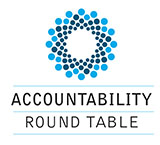Case of Czech Public e-Procurement Information System
By: Jana Chvalkovská (Institute of Economic Studies, Faculty of Social Sciences, Charles University, Prague, Czech Republic) Jiří Skuhrovec (Institute of Economic Studies, Faculty of Social Sciences, Charles University, Prague, Czech Republic) June 2010.
URL: http://d.repec.org/n?u=RePEc:fau:wpaper:wp2010_11&r=ict
The objective of this paper is to analyze the potential of e-Government tools to enable the general public to oversee spending of public institutions. The paper illustrates the “watchdog” potential of reducing corruption by means of providing information to the public on the example of the Czech Public e-Procurement Information System (further called System). The System is an Internet portal, where public authorities announce their intention to purchase goods and services. Such announcements are monitored by private entities that can compete for the respective public contract. For our paper we used a web robot to collect data about public procurements from the System and utilized them for construction of an original Transparency Index, which rates institutions that award public contracts (so called contracting authorities). The composite Index is constructed as a weighted sum of ten various transparency indicators, computed separately for each contracting authority. This Index could serve as an efficient benchmark for continuous control and comparison of public institutions in the area of public procurement and demonstrates how an e-Government tool can contribute to greater openness and accountability of these public institutions and to enhancement of the civic engagement in the control of governmental activities. The results of our research suggest that although the System is good step forward, its current structure does not enable the public to effectively exercise public control over procurements spending of contracting authorities, because of serious difficulties related to viewing (and extraction) of aggregate data. On the other hand, on example of our Transparency Index, we demonstrate that if the System allowed for easier access to data on public procurements, it would serve as an efficient tool of public control and facilitate open government initiatives.
